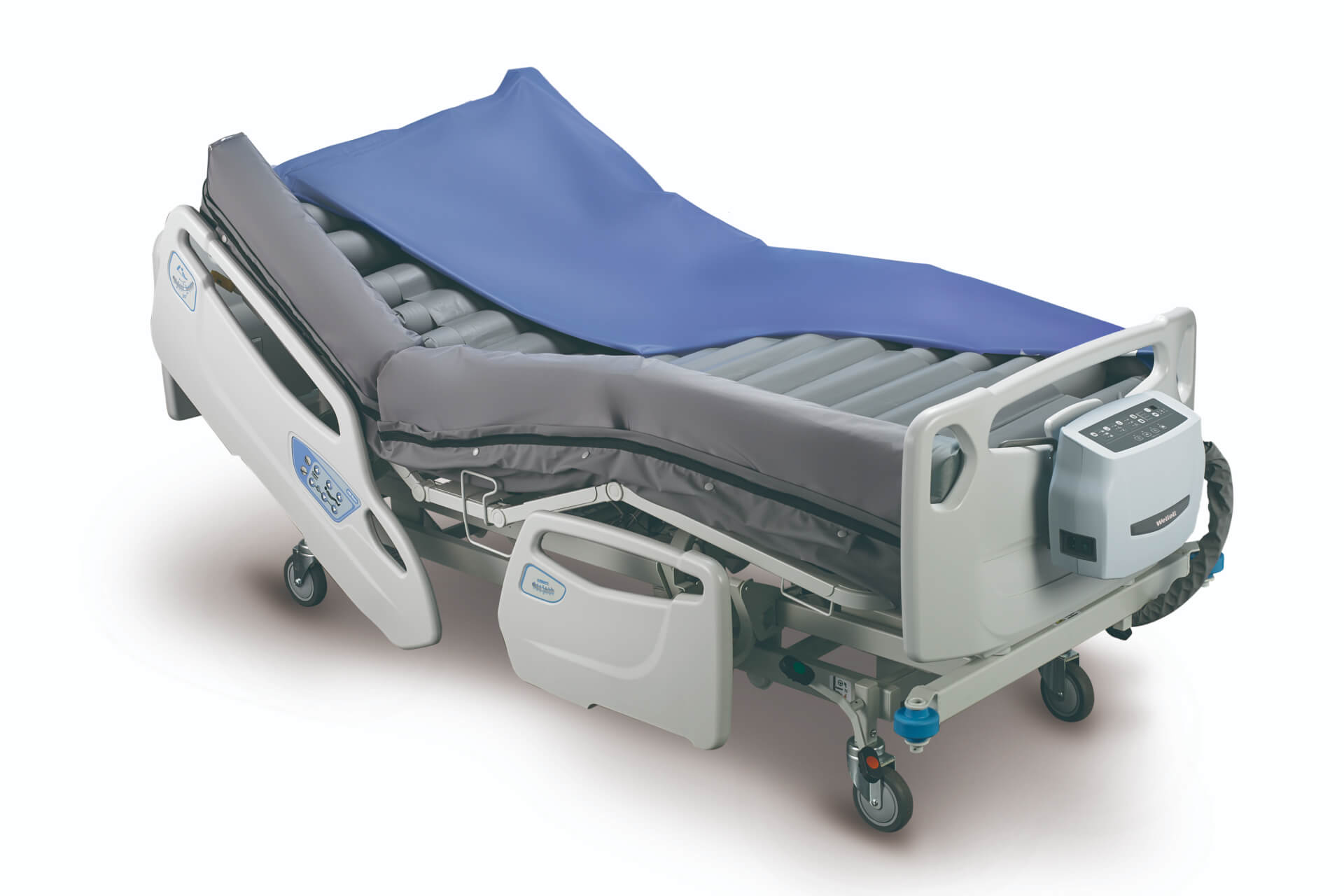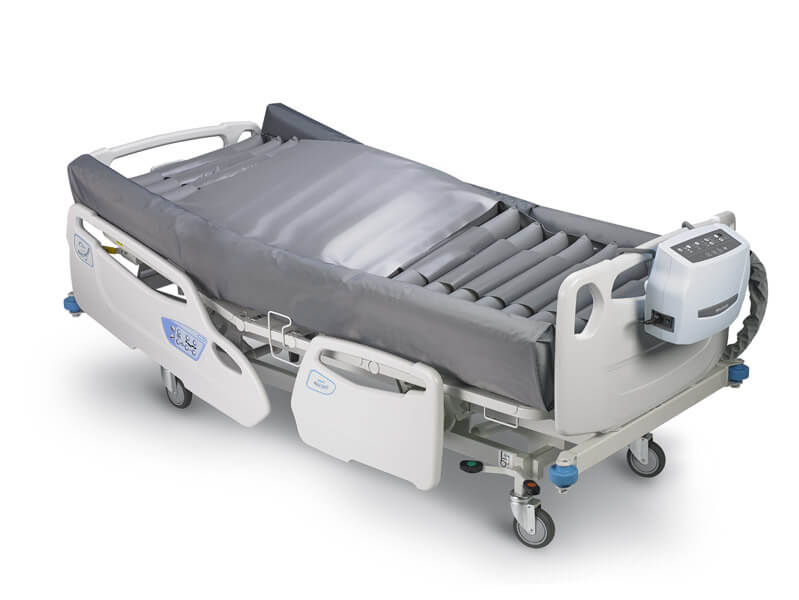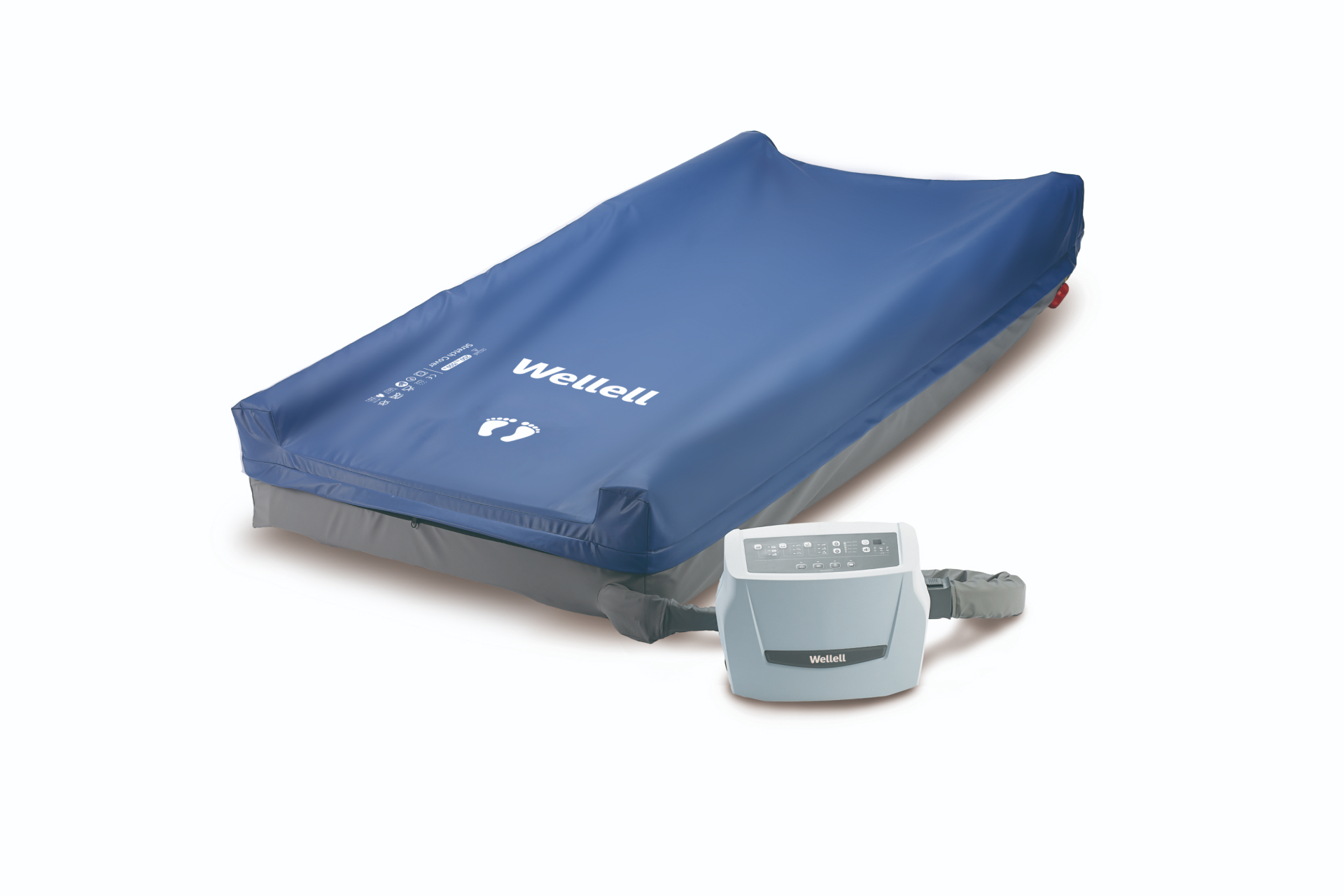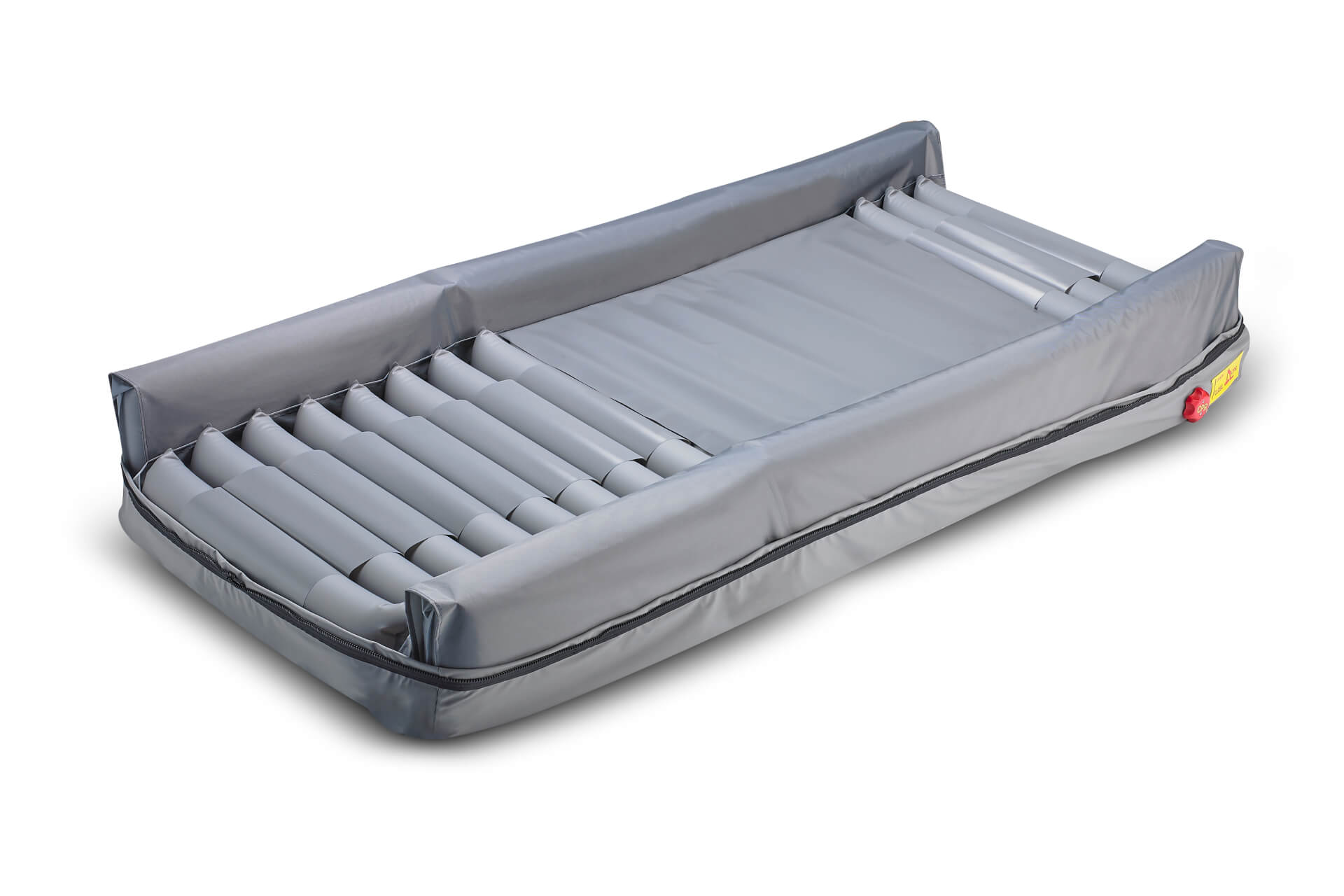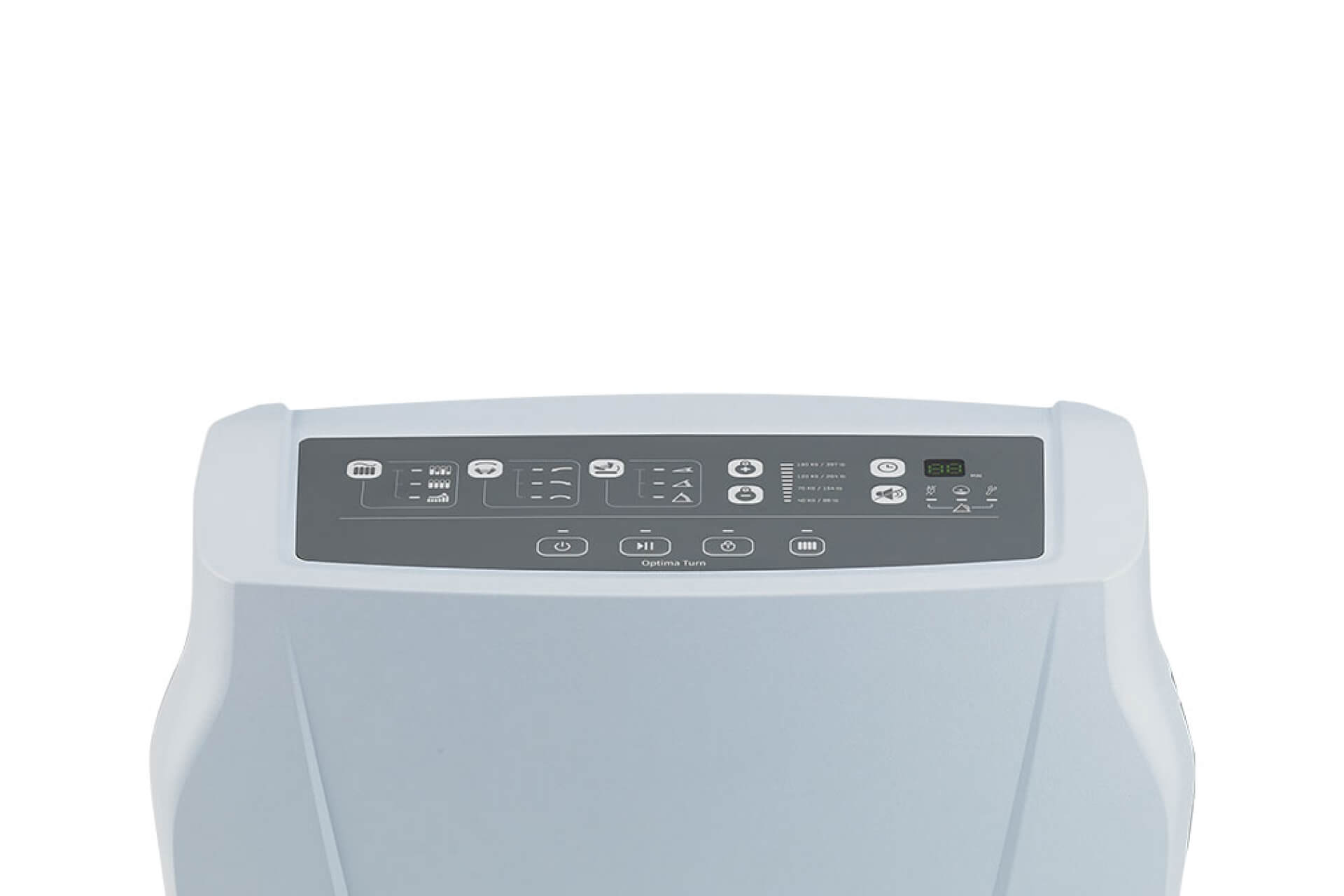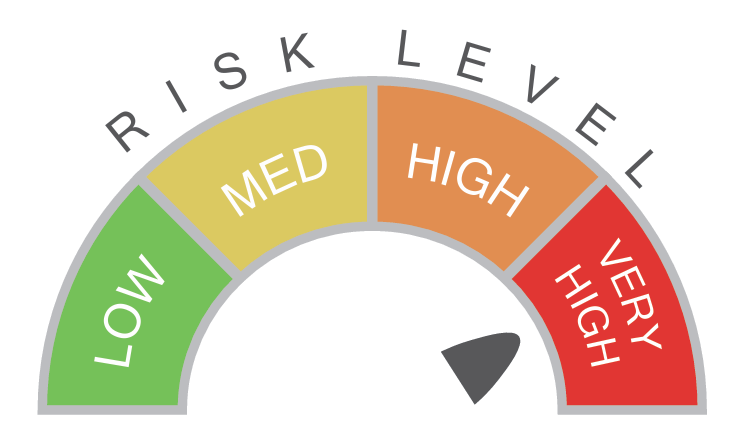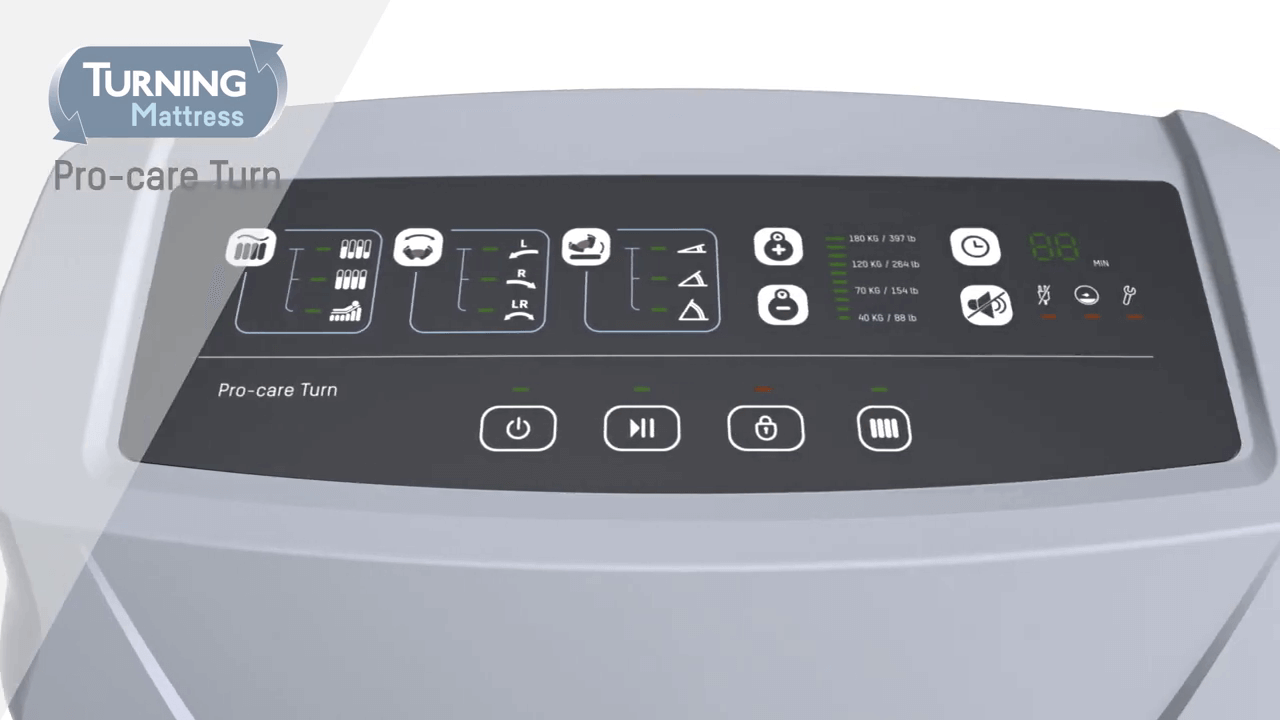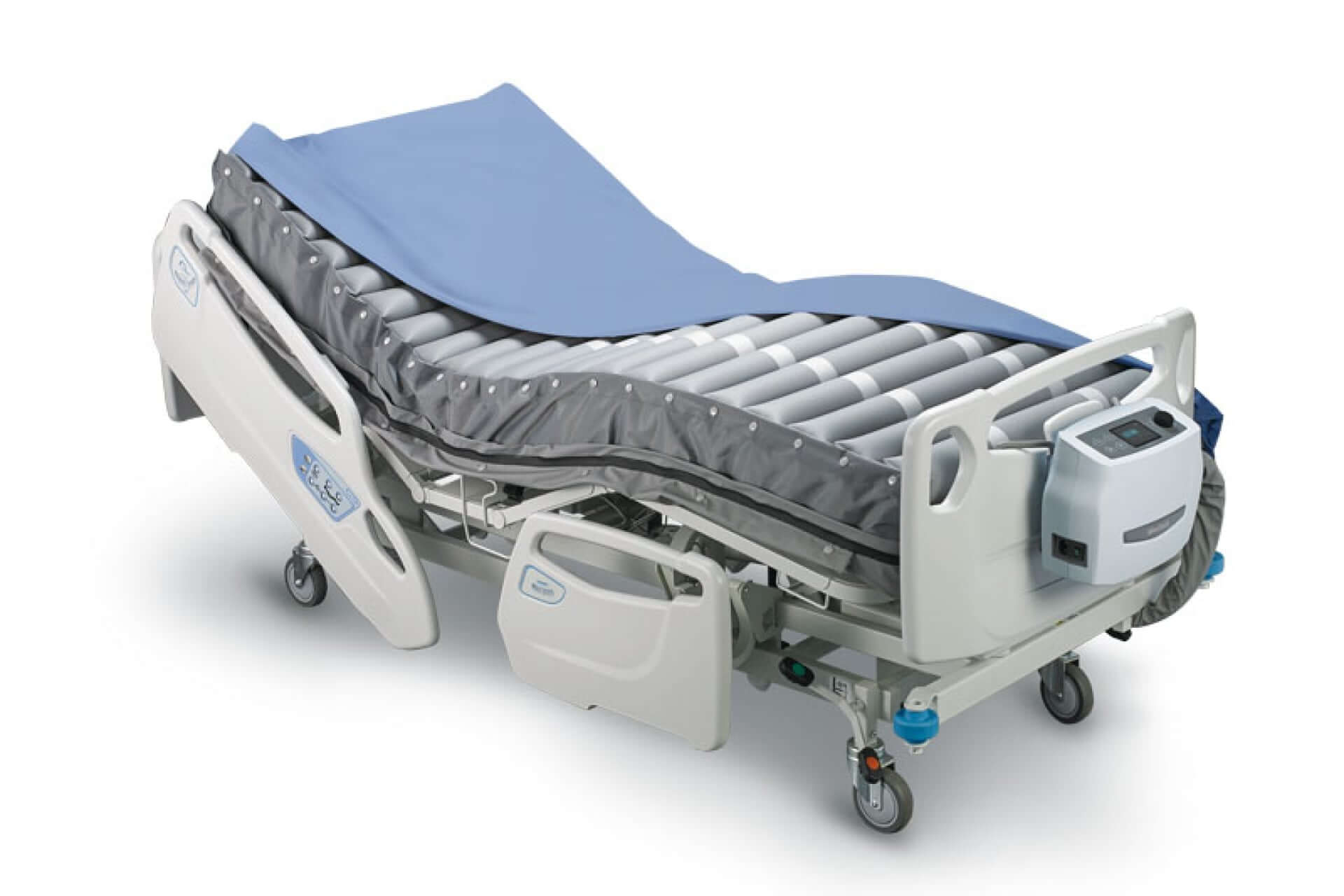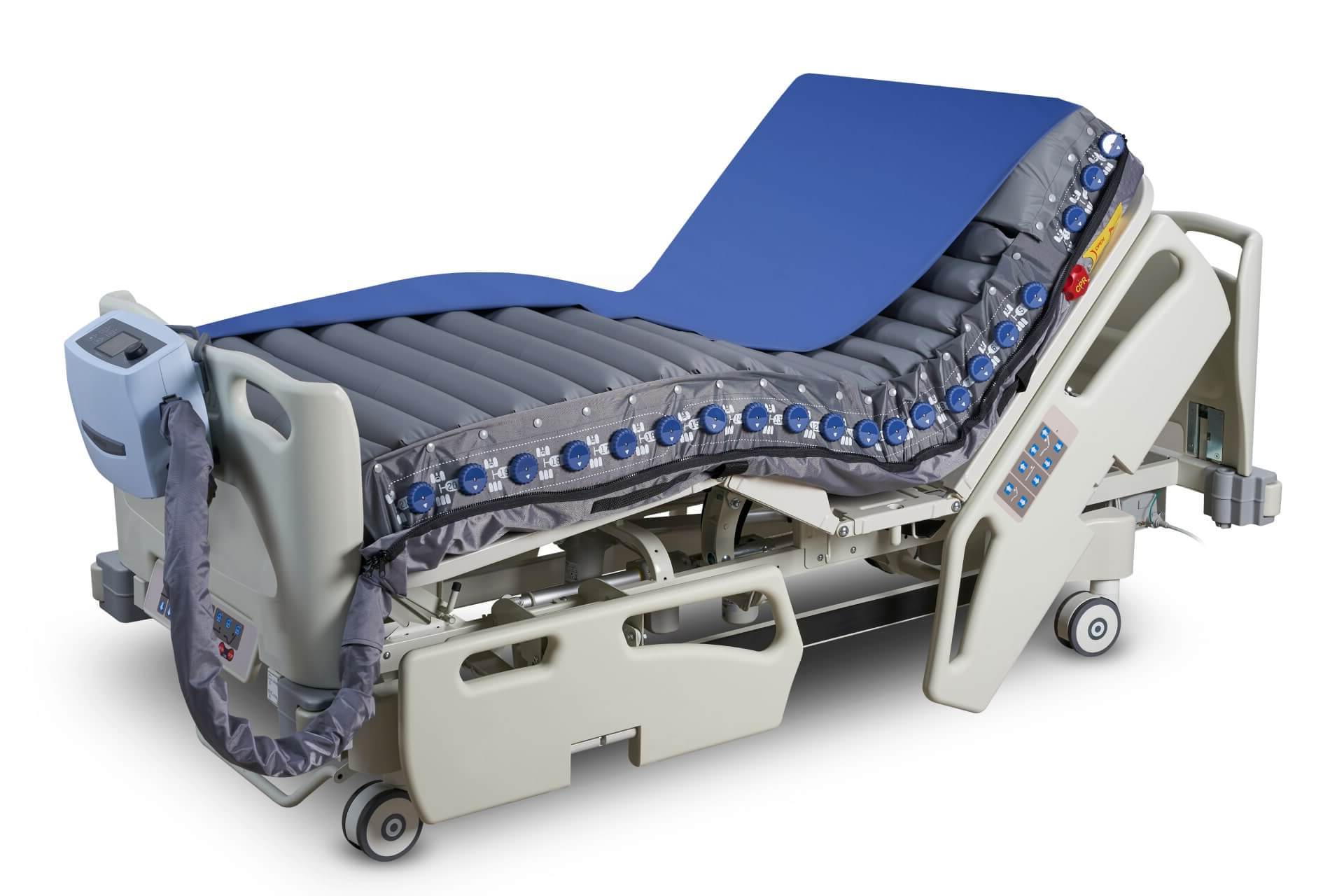Optima Turn
For High to Very High Risk
Contact Us For More Info
Reducing patient handling complexity and patient discomfort — Improving repositioning feasibility and pressure ulcer prevention.
Over 670,000 cases of hospital-acquired pressure injuries occur every year in the United States, with an institutional cost exceeding USD 11.5 million.1,2 Pressure ulcers significantly increase inpatient mortality and prolong inpatients' length of hospital stay by 7 to 11.2 days.1- Treatment costs over USD 130,000 per inpatient (stage IV) and quickly accumulates due to high readmission rate within 30 days after discharge.3,4
Turning patients at a 30° lateral position (lowest max pressure in lateral position) every 4 hours on an alternating pressure mattress significantly reduces pressure ulcer incidences by 85% and labor-intensity for caregivers and improves patient comfort and overall effort- and cost-efficiency.5,6
Optima Turn's automatic and timer-controlled turning up to 30° supported by alternating pressure, multiple pressure relief therapy options and manually deflatable air cells for heel relief care, all easily accessible through the intuitive pump interface, streamlining patient handling and caregiver workload.
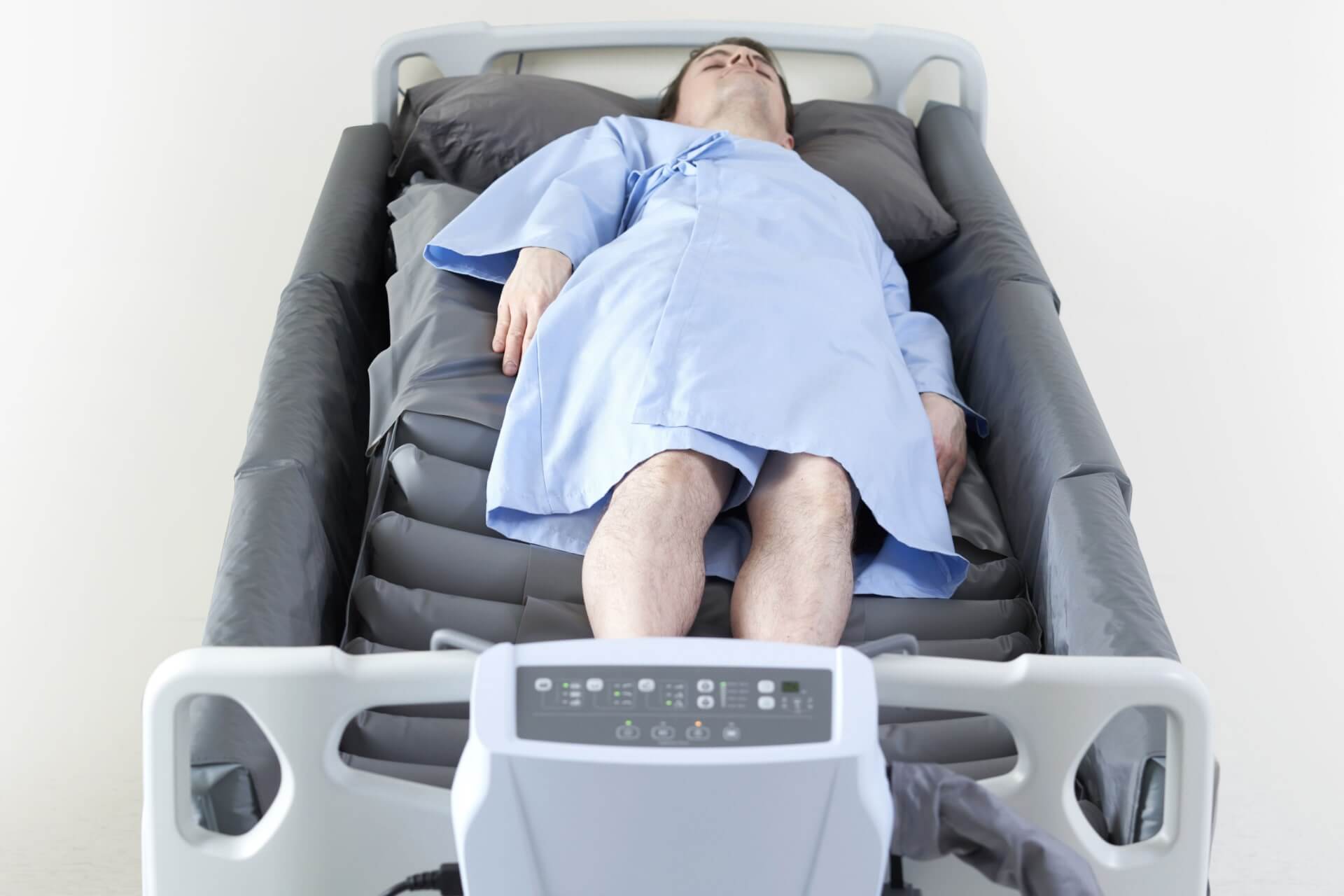
Automatic 30° Lateral Turning
Click-to-activate turning angle, direction, and therapy timer minimise labour requirement for patient repositioning, protect the caregiver from potential injuries, and allow more time and energy to adjust the patient for maximum comfort.
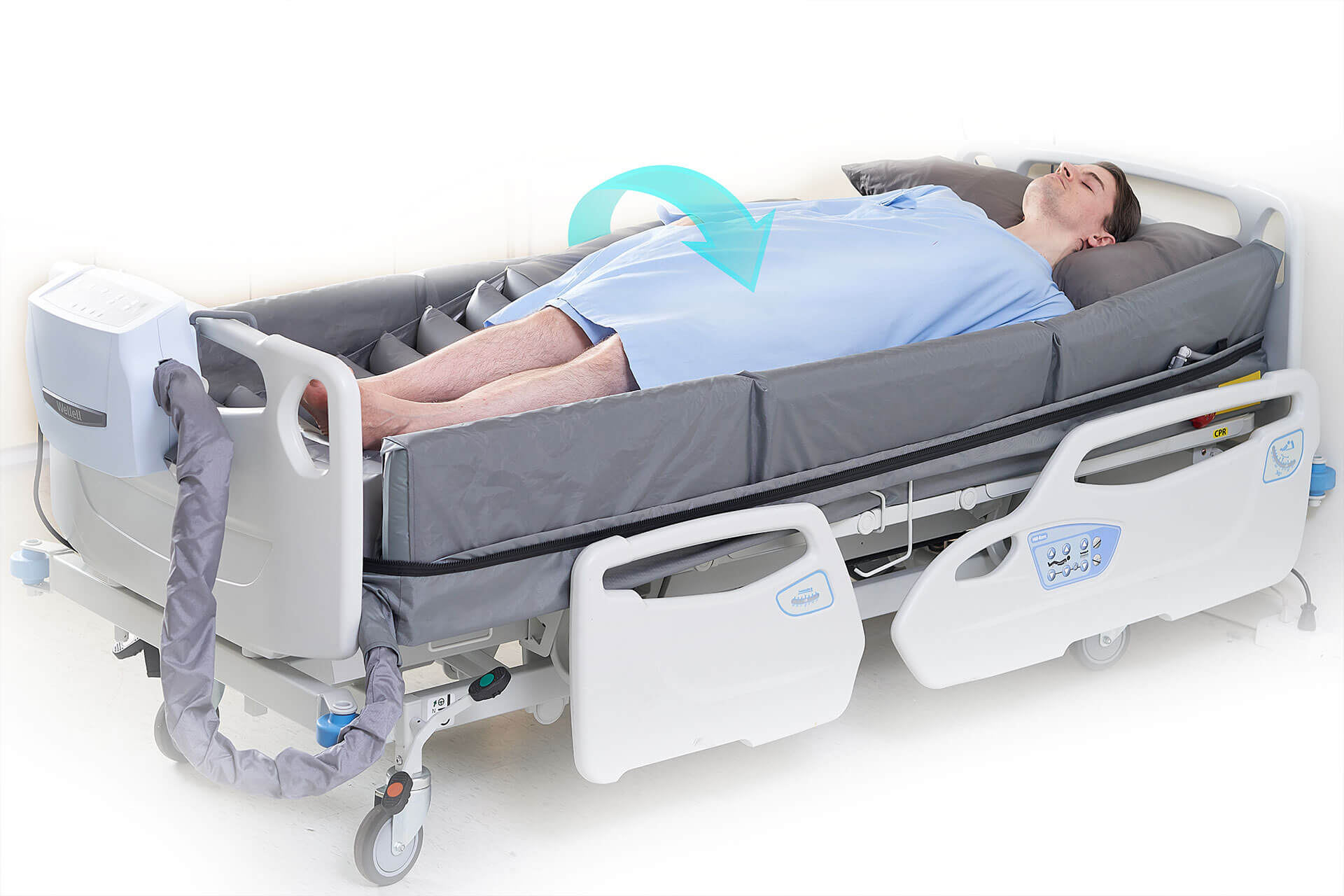
Continuous Surface Pressure Relief
Seamless transition between supine and lateral repositioning with alternating pressure paired with firm side bolsters provide maximum patient comfort and security. Seat inflation modes ensure patients stay comfortable and supported when active.
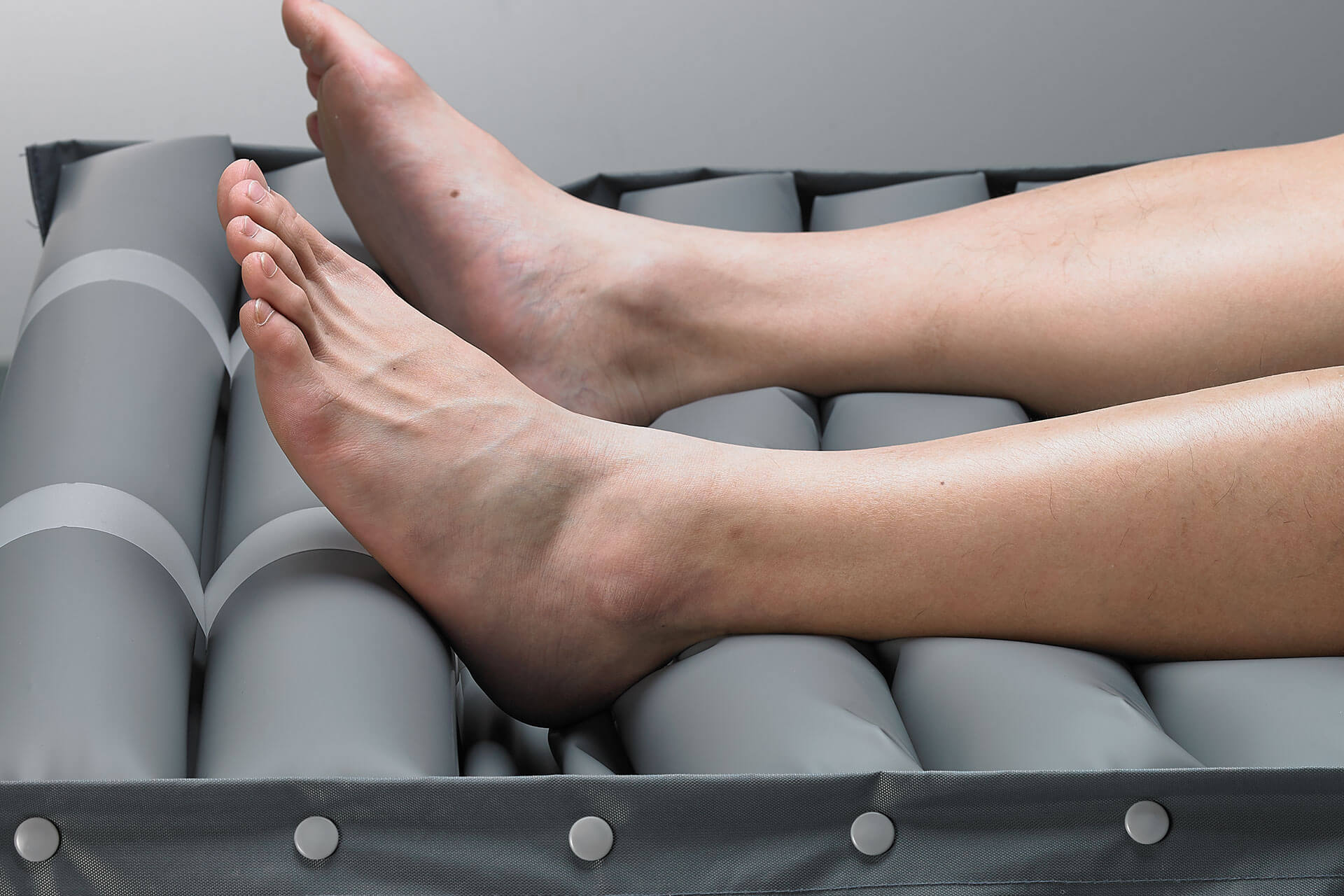
Personalise Heel Relief Care
Accommodate pressure relief care for different body types by deflating individual air cells at the heels for maintaining zero-pressure heel relief, minimising the patient's risk of developing pressure injuries and prolonging the length of treatment.
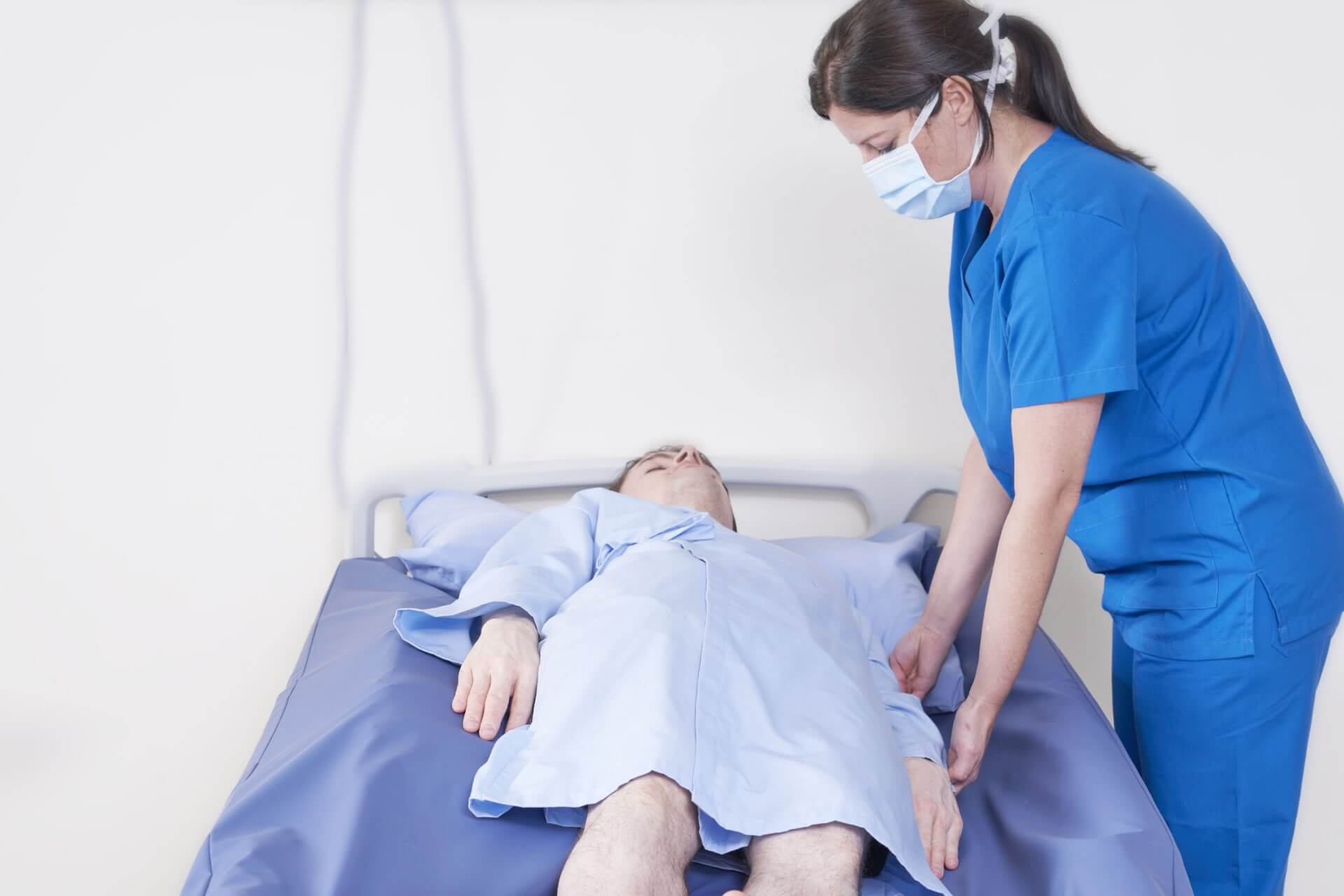
Instant Access to Patient Comfort
Pump's intuitive interface improves patient care by easily customising therapy with pressure settings, turning angles, rotating directions, therapy and dwell timer, alarms, troubleshooting, and rotational pause to halt repositioning operation.
| Standard 200 | ||
|---|---|---|
| Mattress Dimension | 78.7 x 35.4 x 5 in, with side bolster 10 in | 2000 x 900 x 130 mm, with side bolster 254 mm |
| Mattress Weight | 27.5 lb | 12.5 kg |
| Maximum Patient Weight | 397 lb | 180 kg |
| Narrow 200 | ||
|---|---|---|
| Mattress Dimension | 78.7 x 33.5 x 5 in, with side bolster 10 in | 2000 x 850 x 130 mm, with side bolster 254 mm |
| Mattress Weight | 27.5 lb | 12.5 kg |
| Maximum Patient Weight | 397 lb | 180 kg |

Automatic 30° Lateral Turning
Click-to-activate turning angle, direction, and therapy timer minimise labour requirement for patient repositioning, protect the caregiver from potential injuries, and allow more time and energy to adjust the patient for maximum comfort.

Continuous Surface Pressure Relief
Seamless transition between supine and lateral repositioning with alternating pressure paired with firm side bolsters provide maximum patient comfort and security. Seat inflation modes ensure patients stay comfortable and supported when active.

Personalise Heel Relief Care
Accommodate pressure relief care for different body types by deflating individual air cells at the heels for maintaining zero-pressure heel relief, minimising the patient's risk of developing pressure injuries and prolonging the length of treatment.

Instant Access to Patient Comfort
Pump's intuitive interface improves patient care by easily customising therapy with pressure settings, turning angles, rotating directions, therapy and dwell timer, alarms, troubleshooting, and rotational pause to halt repositioning operation.
Automating caregivers’ workflow and improving pressure injuries prevention and long-term patient care.
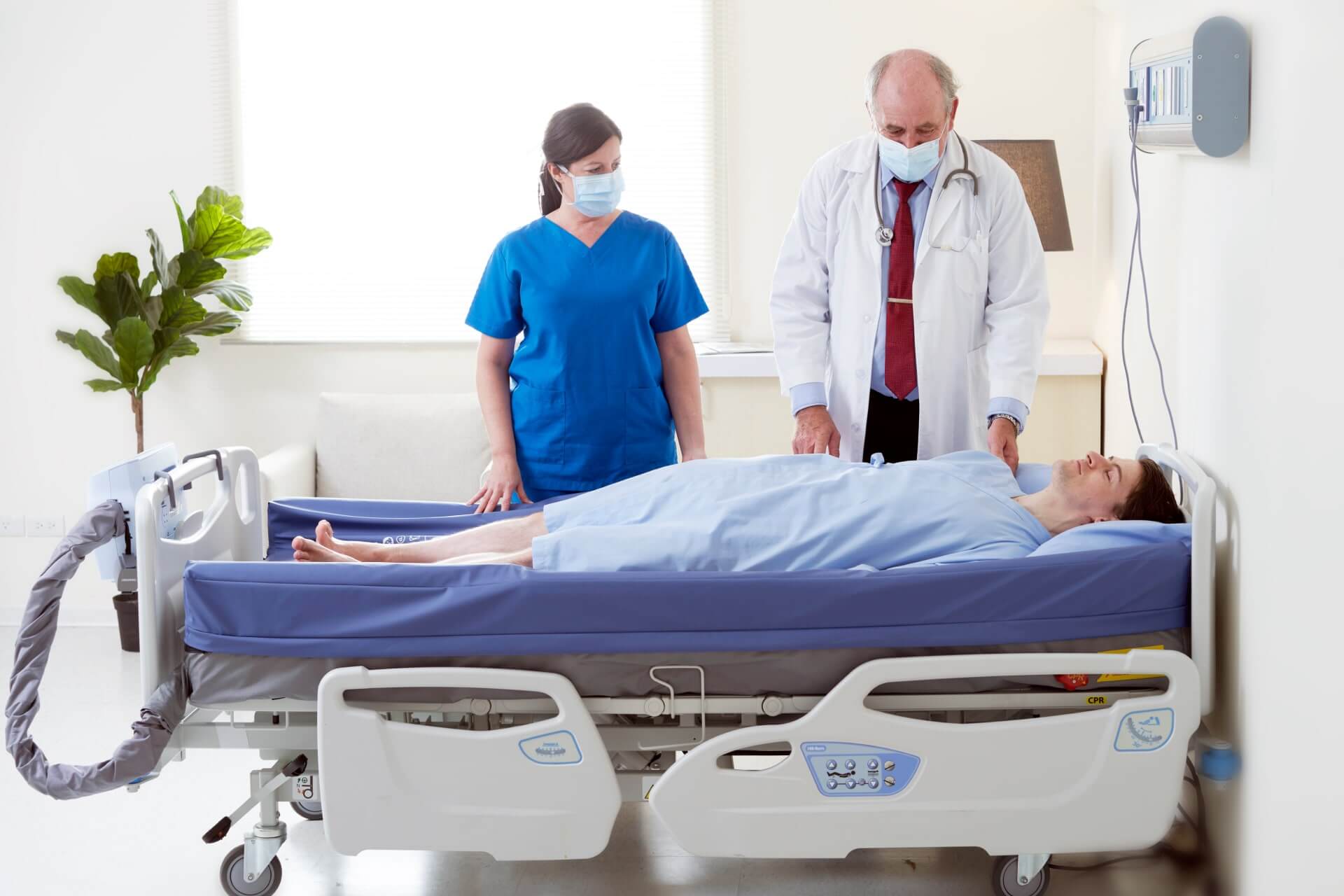
Pressure-relieving surfaces aids repositioning outcome.
Pressure-relieving support surfaces that reduce the number of caregivers required for frequent lateral repositioning improve workplace safety, cost-efficiency and adherence to pressure ulcer prevention practices, and patient care quality and outcomes for all severity levels.7
- Save caregiver's time.
- Relieve pressure on the hips, sacrum, greater trochanters and heels.
- Provide comfort and stability.
- Reduce caregivers' exposure to potential harm from intensive patient handlings, such as lifting and resituating patients.
- Help reposition patients and increase their mobility.
- Customize pressure settings based on the patient's needs.
- Continue pressure relief care during transports and events where immediate power is unavailable with battery backup option.
- Promote active recovery with inflated seating which provides support and stability and prevents patients from bottoming out.
- Quiet operation and automatic turning reduce caregiver interruption to patients sleep patterns.
The side bolsters protect patients from pressing directly against the side railing and sliding off the mattress. The firmness of these air cells also provides additional comfort for the patient's side when in turn.
Optima Turn's mattress provides continuous alternating pressure relief, and the side bolsters protect patients from pressing against the railings while providing comfort. In addition, individual deflatable air cells allow caregivers to customise heel relief care. For more posture support, Turn minimises the caregivers' labour in lifting the patient to place foam or pillows as needed quickly.
- Unconscious
- Bedbound and immobilised
- Medium to high risk of pressure injures, especially on the scapulae (back shoulder area) and greater trochanters (hip side area)
ICU, GICU, NICU, Neurosurgery and Neurology, and long-term care facilities.
After powering on Optima Turn, the air cells will automatically inflate to their maximum firmness. Once the inflation process is complete, the caregiver can choose between continuous low pressure or alternating pressure modes based on the patient's needs. The pump will automatically switch to the alternating pressure mode if a mode is not selected within the first 10 minutes after the initial inflation process.
It takes 3-5 minutes to change from left to right turn and vice versa. The patient's BMI (body mass index) and body contour will influence turning duration, with heavier patients taking longer to change between turns. The dwell time starts counting when the turn reaches the selected degrees immediately.
No. In turn, the alternating pressure mode is part of the default mode and cannot be deactivated.
All air cells are made from Thermoplastic Polyurethanes (TPU). It is highly resistant to breaking down when in contact with water (hydrolysis), soft to touch, and minimises friction and noise during patient movements.
Cell-in-cell design refers to encapsulating a firm air cell within a larger outer cell, doubling the effect of firmness and stability for patients. Wellell’s Optima Series, including Prone, uses air cells with the cell-in-cell design in the sacrum area to improve patient support and comfort during sitting positions and when patients leave and enter the bed.
Reference
- Bauer, Karen et al. “Pressure Ulcers in the United States' Inpatient Population From 2008 to 2012: Results of a Retrospective Nationwide Study.” Ostomy/wound management vol. 62,11 (2016): 30-38.
- Sullivan, Nancy, and Karen M Schoelles. “Preventing in-facility pressure ulcers as a patient safety strategy: a systematic review.” Annals of internal medicine vol. 158,5 Pt 2 (2013): 410-6. doi:10.7326/0003-4819-158-5-201303051-00008
- Brem, Harold et al. “High cost of stage IV pressure ulcers.” American journal of surgery vol. 200,4 (2010): 473-7. doi:10.1016/j.amjsurg.2009.12.021
- Lyder, Courtney H et al. “Hospital-acquired pressure ulcers: results from the national Medicare Patient Safety Monitoring System study.” Journal of the American Geriatrics Society vol. 60,9 (2012): 1603-8. doi:10.1111/j.1532-5415.2012.04106.x
- Defloor, T. “The effect of position and mattress on interface pressure.” Applied nursing research : ANR vol. 13,1 (2000): 2-11. doi:10.1016/s0897-1897(00)80013-0
- Defloor, Tom et al. “The effect of various combinations of turning and pressure reducing devices on the incidence of pressure ulcers.” International journal of nursing studies vol. 42,1 (2005): 37-46. doi:10.1016/j.ijnurstu.2004.05.013
- Jocelyn Chew, H-S et al. “Turning frequency in adult bedridden patients to prevent hospital-acquired pressure ulcer: A scoping review.” International wound journal vol. 15,2 (2018): 225-236. doi:10.1111/iwj.12855

